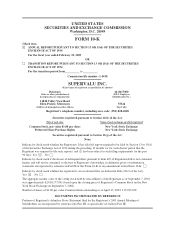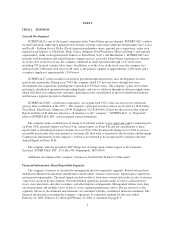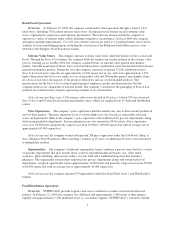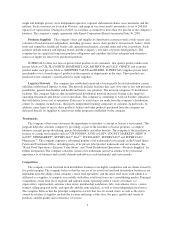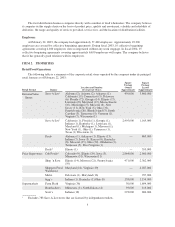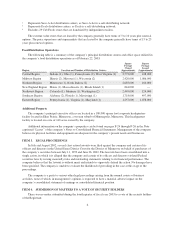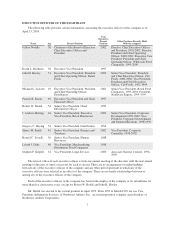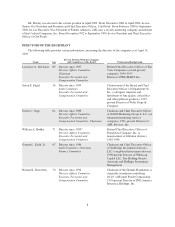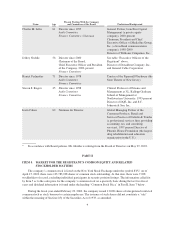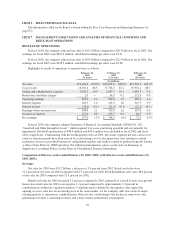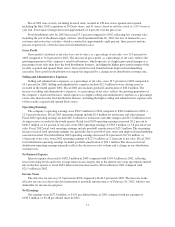Albertsons 2003 Annual Report Download - page 3
Download and view the complete annual report
Please find page 3 of the 2003 Albertsons annual report below. You can navigate through the pages in the report by either clicking on the pages listed below, or by using the keyword search tool below to find specific information within the annual report.Retail Food Operations
Overview. At February 22, 2003, the company conducted its retail operations through a total of 1,417
retail stores, including 783 licensed extreme value stores. Its principal retail formats include extreme value
stores, regional price superstores and regional supermarkets. These diverse formats enable the company to
operate in a variety of markets under widely differing competitive circumstances. In fiscal 2004, the company
anticipates opening approximately 75 to 100 new extreme value stores and 8 to 12 regional banner stores and to
continue its store remodeling program, including the conversion of the Baltimore-based Metro grocery store
network to the Shoppers Food Warehouse banner.
Extreme Value Stores. The company operates extreme value stores under the banners of Save-A-Lot and
Deals. Through the Save-A-Lot banner, the company holds the number one market position in the extreme value
grocery retailing sector. In May 2002, the company acquired Deals, an extreme value general merchandise
retailer. After the acquisition of Deals, Save-A-Lot introduced new combination stores that include both food and
general merchandise product. During the year, the company converted or opened 35 full combination stores.
Save-A-Lot food stores typically are approximately 14,000 square feet in size, and stock approximately 1,250
high volume items that focus on a single size for each product sold and 200 popular general merchandise items.
At a Save-A-Lot store, the majority of the products offered for sale are custom branded products. The
specifications for the Save-A-Lot custom branded product emphasize quality and characteristics that the
company believes are comparable to national brands. The company’s attention to the packaging of Save-A-Lot
products has resulted in the company registering a number of its custom labels.
At fiscal year end, there were 1,150 extreme value stores located in 36 states, of which 783 were licensed
Save-A-Lot’s and 93 were Deals general merchandise stores, which are supplied from 15 dedicated distribution
centers.
Price Superstores. The company’s price superstores hold the number one, two or three market position in
most of their markets. The price superstore focus is on providing every day low prices and product selection
across all departments. Most of the company’s price superstores offer traditional dry grocery departments, along
with strong perishable departments. In-store pharmacies are also operated in 204 locations. Price superstores
carry over 30,000 items and generally range in size from 45,000 to 100,000 square feet with an average size of
approximately 63,000 square feet.
At fiscal year end, the company owned and operated 208 price superstores under the Cub Foods, Shop ’n
Save, Shoppers Food Warehouse, Metro and bigg’s banners in 13 states; an additional 29 stores were franchised
to independent retailers.
Supermarkets. The company’s traditional supermarket format combines a grocery store that has a variety
of specialty departments that may include floral, seafood, expanded health and beauty care, video rental,
cosmetics, photo finishing, delicatessen, bakery, in-store bank and a traditional drug store that includes a
pharmacy. The supermarket format offers traditional dry grocery departments along with strong fresh food
departments. A typical supermarket carries approximately 40,000 items and generally ranges in size from 30,000
to 65,000 square feet with an average size of approximately 50,000 square feet.
At fiscal year end, the company operated 59 supermarkets under the Farm Fresh, Scott’s and Hornbacher’s
banners.
Food Distribution Operations
Overview. SUPERVALU provides logistics and service solutions to retailers for food and non-food
product. At February 22, 2003, the company was affiliated with approximately 2,460 stores as their primary
supplier and approximately 1,500 additional stores as a secondary supplier. SUPERVALU’s customers include
3

